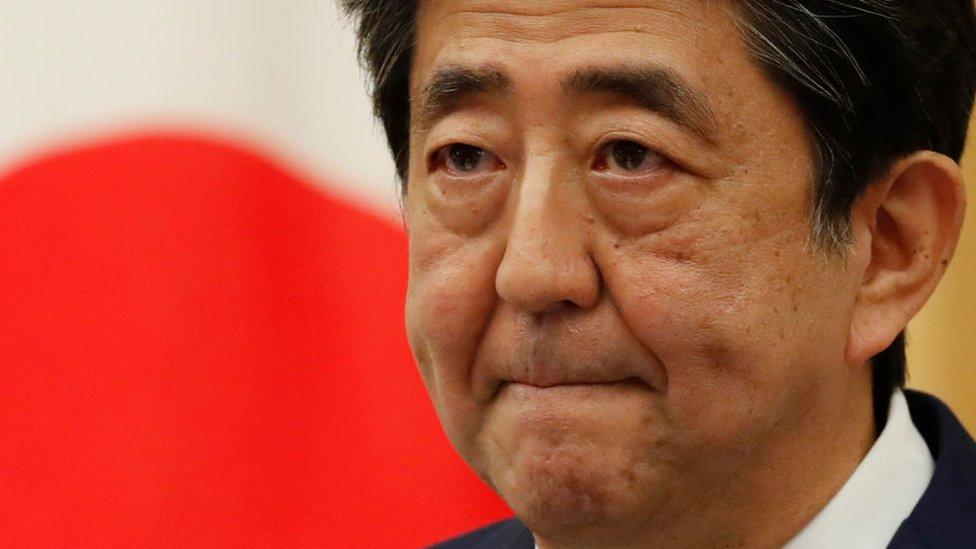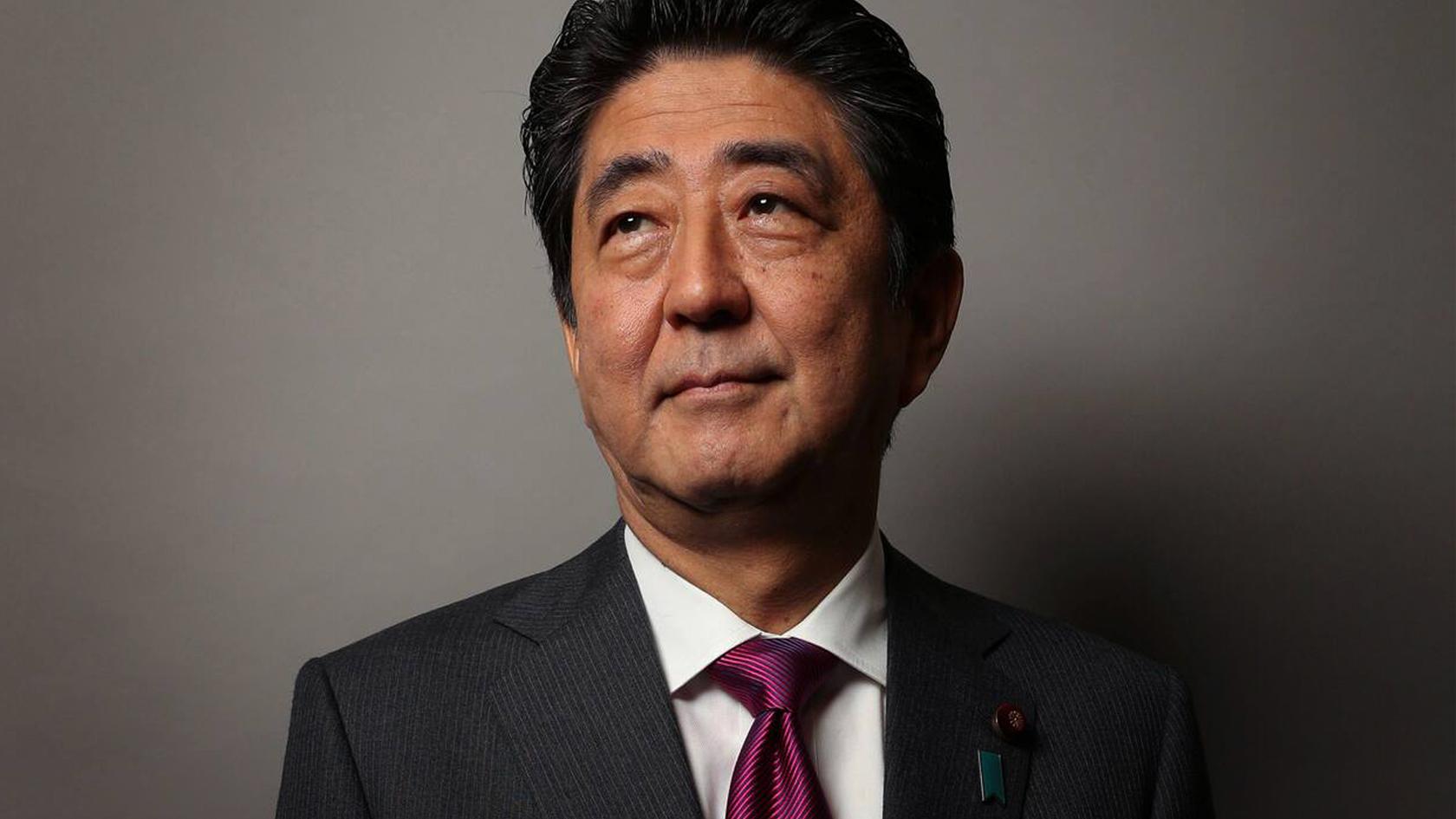Abenomics: How Shinzo Abe aimed to revitalise Japan's economy
- Published

Japan's former Prime Minister Shinzo Abe, who was assassinated on Friday, had aimed to transform the economy.
He was the country's longest-serving prime minister, before standing down in the late summer of 2020.
Perhaps the most high profile policy of his time in office was "Abenomics", the economic programme that bears his name.
Although the raft of stimulus measures and major reforms did reinvigorate the world's third largest economy, it also fell short of expectations.
Mr Abe took office in 2012 at a time when Japan was in recession and Abenomics was seen as helping it return to growth during his first term.
However, his efforts to revive Japan's economy faced a major challenge when the country went into recession in 2020.
That and other slowdowns raised questions about the effectiveness of his approach.
What was Abenomics?
Mr Abe's signature economic programme was the set of policies that he introduced from 2012.
His plan was to jumpstart Japan's economy out of two decades of stagnation using the so-called three "arrows" of Abenomics:
Monetary policy: Japan's hyper-easy monetary policy in the form of negative short term interest rates was put in place to make it cheaper for consumers and companies to borrow money and spend.
Fiscal stimulus: Pumping money into the economy, which means the government spending more money on things like infrastructure, or giving financial incentives to companies like tax breaks.
Structural reforms: Corporate reform, adding more women into the workforce, labour liberalisation, and allowing more migrants into the workforce to help ease labour pressures and add to economic growth.
Did Abenomics work?
As an exercise in political branding, Abenomics was certainly a success, though it fell short of Mr Abe's own key economic target.
When his government took office it was faced with the daunting task of revitalising Japan's once dynamic economy, which was still in the shadow of the major slowdown during the so-called "lost decade" from around 1991 to 2001.
Abenomics did help drive growth, though not at the pace that the country had seen during its post-war boom. Even now, the size of the economy remains lower than the 600 trillion yen (£3.7tn; $4.4tn) goal set by Mr Abe's administration for 2020, external.
But as he left office many economists credited Mr Abe for putting the country in a more robust position to withstand economic shocks like the pandemic than when he came to office almost eight years earlier.
Shinzo Abe's economic legacy
Mr Abe's economic approach was called into question when Japan slipped back into recession in early 2020.
He also faced criticism over how he dealt with Covid in the country. He mounted campaigns to encourage domestic tourism which opponents said contributed to a resurgence in infections.
Critics also say Abenomics failed deliver on pledges such as giving women in the workforce more of a voice, tackling nepotism and changing unhealthy work cultures.
However, on Friday, Bank of Japan governor Haruhiko Kuroda said Mr Abe had done much towards "pulling Japan out of prolonged deflation" and "achieving sustained economic growth".
He added he wanted to "express sincere respect for Abe's strong leadership", and "contribution to Japan's economic development".
So what does the future hold for Japan's economy now?
When Mr Abe stood down in spring 2020, he was succeeded as leader of the Liberal Democrat Party and Prime Minister by Yoshihide Suga, who continued to pursue the policies of Abenomics.
Japan's present Prime Minister Fumio Kishida took over from Mr Suga last October. Like his two predecessors he is a member of the Liberal Democrat Party (LDP), but in an interview soon after taking office he told the Financial Times, external: "Abenomics clearly delivered results in terms of gross domestic product, corporate earnings and employment. But it failed to reach the point of creating a 'virtuous cycle'.
"I want to achieve a virtuous economic cycle by raising the incomes of not just a certain segment, but a broader range of people to trigger consumption. I believe that's the key to how the new form of capitalism is going to be different from the past," he said.
In the face of Omicron and the surge in energy prices, the current government has supported vulnerable households and affected businesses.
The Organisation for Economic Cooperation and Development (OECD) is now predicting that after a slow start to the year, with demand weighed down by Covid and the Russia-Ukraine war, the economy will start to pick and grow by 1.7% in 2022. It does, however, warn that economic recovery will be "sluggish".
Related topics
- Published8 July 2022
